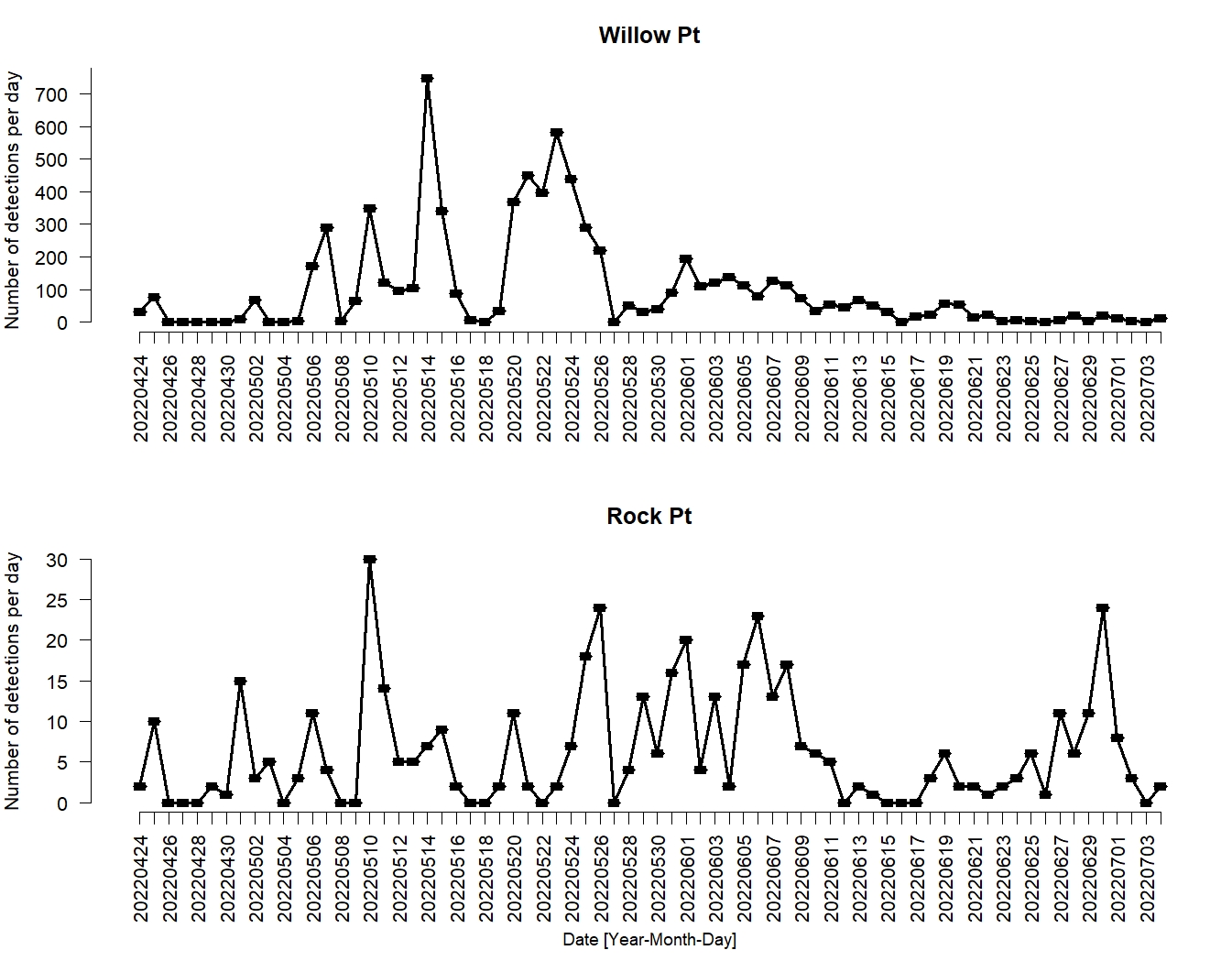After two years of collaboration with French bio-acousticians, the Ptarmigan module is now thoroughly testing the resulting algorithms for automatic detection/classification of Willow and Rock ptarmigan from our bio-acoustic monitoring on Varanger Peninsula.
Recording of a sample of unique ptarmigan males was used in the search for the part of the ptarmigan calls that code for individual information. This was used to develop automatic procedures for individual recognition. Photo: Bertrand Muffat-Joly
When tested during the development phase, the algorithms have been shown to identify song sequences to the species level with very high precision (~98%), with very few instances of false positives or false negatives.

Figure 1. Show the aggregated number of detections per day of Willow ptarmigan (upper) and Rock ptarmigan (lower) during the spring/early summer of 2022 from one acoustic recorder. Note that the x-axis denote the date in the format year, month and day of the month for the period from the end of April (24.04.2022) to the beginning of July (04.07.2022).
We have now tested these algorithms on the most recent and new data from 2022, and the automatic classification works extremely well.
Hence, we have high expectations to the use of these algorithms on data from our acoustic monitoring in future scientific work, as well as to further developments that will lead to the identification of ptarmigan to the level of unique individuals. Future work will be aimed at building specific food web models of ptarmigan dynamics on the Varanger Peninsula.
However, as a first step we will analyze drivers of phenological dynamics of male territorial behavior, using the entire dataset in Vestre Jakobselv back to 2017.
We are excited by the collaboration with Frédéric Sèbe and Jeremy Rouch from the University of Jean Monnet Saint Étienne, but also for the development of automatic detection of other species and communities in the near future.

Figure 2. Show the aggregated number of detections per hour of the day of Willow ptarmigan (upper) and Rock ptarmigan (lower) during the spring/early summer of 2022 from one acoustic recorder.
Read more about this in “Automatic sound stations and bioacoustics: The backbone of COAT Varanger's annual winter field work on ptarmigan”.